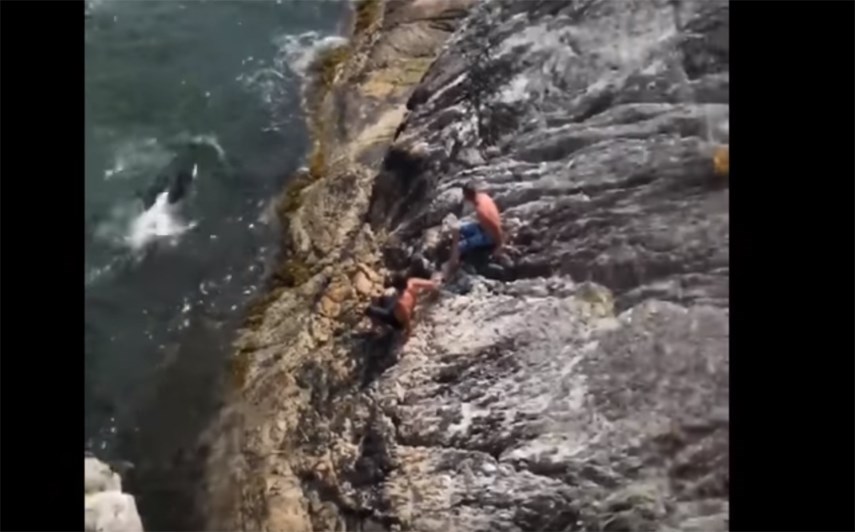Some visitors to West Vancouver’s Whytecliff Park got about as close as you can get to killer whales outside captivity over the long weekend.
Two swimmers scrambled out of the water and up onto the rocks as one of the orcas came within feet of the shoreline.
The incident was caught on video, which is now making the rounds on the internet. It wasn’t David Attenborough behind the lens, however, but Robin Leveille, a Vancouver-based cinematographer and camera operator.
Leveille shot the video and posted it to his Instagram page on July 3.
“A whale of a good time here at Whytecliff Park today,” he commented.
The orcas were almost certainly Biggs killer whales, also known as transient killer whales.
“They sneak along shorelines like that, like you see in the video, usually looking for harbour seals,” said Lance Barrett-Lennard, the Vancouver Aquarium’s head of cetacean research. “That looked like foraging behaviour to me.”
Barrett-Lennard said a few people have asked him what might have come of the swimmers had they not cleared out of the way. There has never been a documented case of a Biggs whale killing a human, and the last known case of an injury was more than 25 years ago off the coast of California.
“There were seals in the area, so the presumption is that was a case of mistaken identity,” he said.
Still, the swimmers probably made the right decision, Barrett-Lennard added.
“It makes perfect sense. They’re a big animal and they can be a bit curious,” he said, adding that their tails can give a nasty thump. “In a precautionary way, I think I would have done exactly what they did.”
The population of Biggs known to inhabit the area has increased about four-fold over the last 40 years, Barrett-Lennard said.
“We know that there are well over 250 now that use B.C. coastal waters,” he said. “There’s been a pretty substantial increase.”
Driving the healthy population rebound is an explosion in the numbers of seals and sea lions they prey on. Those species used to be culled in the 1960s and ’70s because they were seen as a nuisance to the fishing industry.
Resident killer whales, which rely on salmon to survive aren’t looking so “rotund,” Barrett-Lennard said.
“These Biggs killer whales look like they’re not struggling at all to find food. They’re quite fat,” he said.
Anyone who spots a whale, dolphin, porpoise or sea turtle is asked to call the B.C. Cetacean Sightings Network, at 1-866-I-SAW-ONE (472-9663) Since 2000, the network has documented more than 100,000 verified sightings in coastal waters, which are logged for research.



